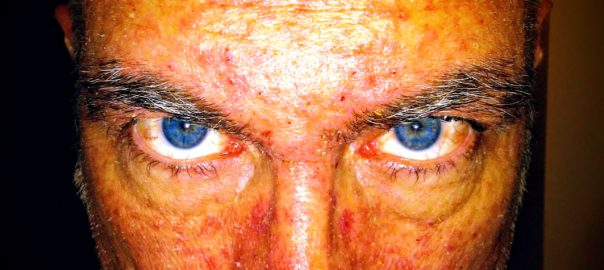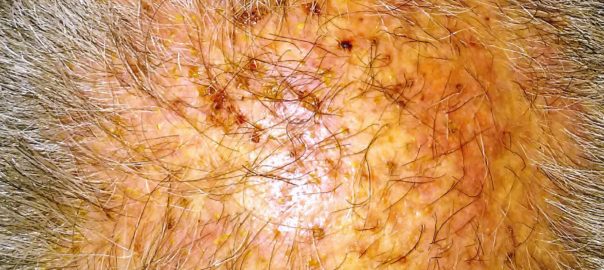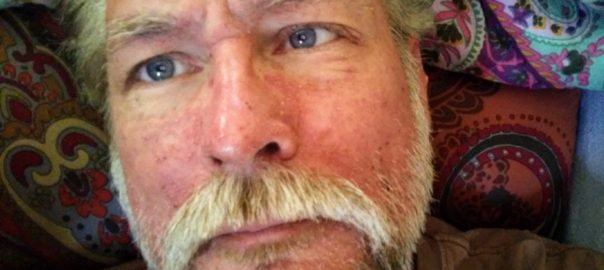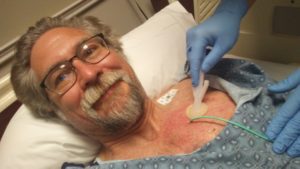Trigger Warning: Graphic and Bloody Content Related to Medical Treatment
Also, there is a link to my podcast, equally scary.
I call the following picture “Why I Can’t Have Nice Things…” Continue reading Inability To Write
Trigger Warning: Graphic and Bloody Content Related to Medical Treatment
Also, there is a link to my podcast, equally scary.
I call the following picture “Why I Can’t Have Nice Things…” Continue reading Inability To Write
 I was told twice in one day this week that I looked “bright.” I was smiling and active, keeping myself busy and directed, and I was surrounded by people who I had not seen in several months (along with a few I had never seen at all). It was the good nature of reconnecting in a friendly crowd without the threat of being lost in it, I imagine, that sparked my particularly good mood on that occasion. The description was used again on subsequent days by unrelated people, causing me to take note that, perhaps, the whites of my eyes have simply become whiter. (Insert your own Revolutionary War joke here.) Continue reading To Clear or Not to Clear
I was told twice in one day this week that I looked “bright.” I was smiling and active, keeping myself busy and directed, and I was surrounded by people who I had not seen in several months (along with a few I had never seen at all). It was the good nature of reconnecting in a friendly crowd without the threat of being lost in it, I imagine, that sparked my particularly good mood on that occasion. The description was used again on subsequent days by unrelated people, causing me to take note that, perhaps, the whites of my eyes have simply become whiter. (Insert your own Revolutionary War joke here.) Continue reading To Clear or Not to Clear

I spent well over 45 minutes combing scabs out of my sparse hair to commemorate the end of the second week of my third month on poziotinib. Not all at once, mind you; I had the good sense not to stand hunched over the sink for more than 20 minutes at a stretch. When I was done, or at least thought I should be, I rewarded myself by sort of washing and conditioning the wiry bristles that cover much of my scalp. Such are these minor celebrations. Continue reading Poziotinib and Me at Month Three: Feeling Crusty (But Still Onboard)

I am now into the third month of my clinical trial for poziotinib. After the first two months, I had to take two weeks off for recovery from the rash it gave me. I am, however, glad to be back on the drug for the very simple reason that it was effectively killing the cancer within me. That is not a claim I make lightly, or, sadly, have had reason to make much at all over the past year.
When I was first put on chemotherapy back at the end of 2014, it was because there were no targeted therapies or immunotherapies available, either on the market or through clinical trials, that were likely to work for me. Chemo seemed to be the only option and, in some ways, it felt like a last-ditch effort. My tumor was considered inoperable, the metastasis had spread too far and wide, and radiation was not even being presented as an option.
While I was primed for a limited response and the possibility that I might only get a few months extension from the process, it turned out that chemo kind of worked for me. It worked well enough, in fact, that I would stay on it for over two and a half years — most of that time, simply keeping the cancer growth in stasis. There was talk of the possibility of being on that drug for five or more years at one point, but not long after the two-year mark I began to notice small changes in my scans. Very small, but changes, nonetheless. Continue reading Week One: The Oozing Begins

Crouched over the kitchen sink, I surged with a repressed groan, stifling the convulsive impulse as tears broke free; I cried, uncontained, momentarily unaware why. I was so used to keeping it in, I had become disconnected from what I was actually feeling — ironic, because what I was feeling right then was disconnected.
I did not recognize my body. This vessel in which I was contained made no sense to me at all. It responded to my thoughts and commands, but it felt completely foreign. Looking down at my arms, my hands, my fingers, I recognized nothing. They could hold the dishes I was washing, turn the knob on the faucet, even scrub with the brush. But there was a clumsiness about them, an awkwardness that was hard to explain or rationalize, except to know immediately that none of that was part of my body. None of it was Me.
Such is the effect of bodily changes that occur under cancer treatment. I was experiencing a slight case of dysmorphia, that feeling of certainty that you are not in the right body. It passed, but the emotional impact lingered. Continue reading This Is Not My Body

At the end of May, I began participating in a clinical trial for Poziotinib, a new targeted therapy that works on mutations in the EGFR and HER categories. Naturally, within days of my May 23rd start, I had already begun exhibiting side-effects from the new medication. The resulting rash has persisted and spread, morphing into a completely new experience for me. I thought at the time that the minor ordeal I had in preparing for the clinical trial would have been the biggest challenge of the trial itself: first I went in for a “simple” needle biopsy procedure, then I had to stay to deal with the effects when things did not go exactly according to plan. The experience even inspired an opinion piece for the Philadelphia Inquirer. But I passed over that (still relatively minor) road bump and ran headlong into the clinical trial and resulting crash back into Rashville.
Having a rash does not sound all that bad in the grand scope of things. A little salve, a dollop of willpower, and it should be easy to weather. Itching too much? Slip on some gloves or spray it with lidocaine. Rashes pass. At least it is not nausea or debilitating pain or sleeplessness. Well, at least it is not nausea. Continue reading Endurance and Payoff
Spoiler alert: my rash has returned.
Before I get into the details of this new leg of my journey, I’m taking a moment to reflect on the side-effects of the past. In August of last year (2017), I stopped taking chemotherapy due to signs of progression. After about a month of cleaning out my system, I noticed a serious boost in both my mental and physical energy levels. My body began shaping up. I felt really good. And I started my first “targeted” therapy, the drug Gilotrif (generic name, afatinib).
Gilotrif was highly promising at the time. It had shown some level of effectiveness on the HER2 mutation in cancer studies but was still off-label for my use because it was designed to target a very closely related mutation. I loved it at first, however, because I kept feeling better and — in comparison to my 2 years and 8 months on Alimta (generic name, pemetrexed) — there was just an amazing lack of initial side-effects. Alimta had been fairly easy to tolerate overall and I had no real complaints considering how well it had worked. But I did have some skin and digestive issues, as well as persistent fatigue, that plagued me every month. Toward the end, the skin issues were particularly bothersome, and I was beyond thrilled when they cleared up. Continue reading The Rash Is Back
If you are anxious to get an update on my Gilotrif / afatinib treatment, you can listen to me talk about it for approximately ten minutes on my podcast, but this is a fairly busy day for me and I’ve got something far more interesting started… It isn’t every day that a person is asked to participate in a research project that could have direct ramifications for the future of cancer care across the board, much less my family or my own body.
Because I get my treatment through a major research institution, of which my oncologist is a key player, I’m fortunate to be considered for (or at least kept up to date on) new trials and the latest in treatment options. But today, as my session with my oncologist was concluding, he brought in a representative of a research project to ask if I was willing to participate in their study. The immediate benefit for me is that I will get a complete genomic sequencing done on my tumor. That is pretty impressive.
The ORIEN Total Cancer Care Protocol requires relatively low patient commitment — they have access to my existing tissue samples, which hopefully will afford enough material for them to work with, and in less than five minutes I was in and out of a quick blood draw. Now I get to sit back and see if they find anything interesting. ORIEN stands for The Oncology Research Information Exchange Network. It is all about data sharing and matching patients to precision medicine for treatment. Of course, there is no knowing whether it will turn up anything new or unique for me to try in the near future. I am looking at this more as an opportunity to be a part of something greater, that will positively affect future generations.
The research part of this study, technically under the umbrella of clinical trials, is very ambitious. It isn’t expected to reach completion until after 2036, however; I’m hoping that I’ll be around to read about their conclusions.
If this post resonates with you, please consider supporting my work through a monthly subscription to my feed on Patreon, or a one-time donation through PayPal. Follow me on Twitter, Facebook, Tumbler and many other fancy social sites or apps. Please share my posts to groups you are involved with on Reddit or Google+ or anywhere else that you feel it will help or enlighten or inspire another reader. (Sharing buttons are below the post!)
Thank you!
It has been over two weeks since I began taking my new drug, afatinib. Over two weeks of feeling good, feeling like the chemo has been thoroughly flushed from my system even as I have diligently taken these new pills, feeling the best that I have in three years. I have been keeping a journal this time, chronicling how my body is responding each day, trying to pave the way for a better understanding of how to live with this new treatment. For the first week, anyway, it almost seemed like it was going to be too easy.
There are two weeks of video updates on my Patreon feed, talking about how great I feel and wondering how bad the side effects will be once they really kick in. I had been prepped by my oncologist that it was very likely that I would experience worse side effects than I had with the chemo I had been taking. This was based on how well I tolerated pemetrexed, the chemotherapy drug that had kept my cancer at bay for so long, but not so much on patients in general having a particularly tough time on afatinib. Which is not to suggest that I expected a walk in the proverbial park with this new drug.
Still, the first week was amazing. It was almost like I was taking nothing at all. Sure, there was some digestive stuff going on, but nothing outside of the realm of what I would have been used to in a previous life if I decided to live off of bean burritos for a few weeks. And I love a good burrito, so it would be worth it. But by day eight, I realized that the side-effects of the drug were presenting themselves quite visibly. Continue reading Spoiler Alert: Side-Effects Show Up